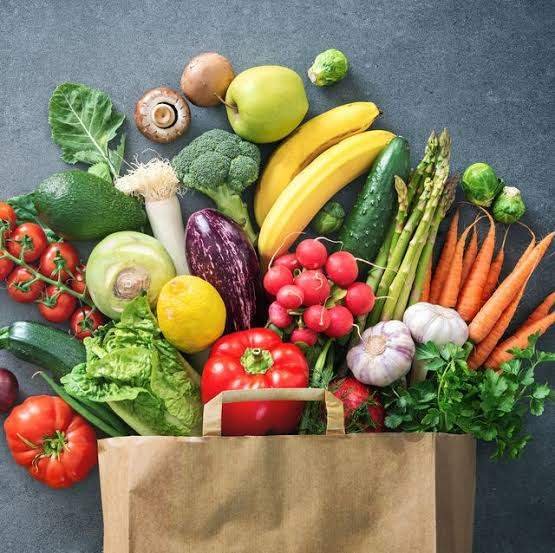Vegetables
Introduction:- Vegetables are those annually or bi-annually grown crops that are consumed by human or other animals as a food. Vegetables can be classified according to the parts of crops that can be edible like flowers, stem, roots, fruits, leaves and seeds. Vegetables can be eaten either raw or cooked and play an important role in human nutrition, being mostly low in fat and carbohydrates, but high in vitamins, minerals and fibers.
Due to the increase in population, industrialization, advertisement, people's lifestyle the demand of vegetable is inclining day by day. Despite of geographical variation of our country different kinds of vegetables can be grown in different climatic weather. Vegetables can be produced with a high yield in less amount of time as compared to other crops because of this vegetable farming is being favorite among the farmers and growing day by day.
Importance of vegetable crops production
Vegetable play a great role in our daily balance diet. Vegetables are also known as Protective Supplementary Food because of the major elements like Minerals, Vitamins, Amino acids.
Importance of vegetables in human diet
Carbohydrate, protein, vitamins, fats, fibers and water are the important elements required in human body. Almost all of these requirements are founds in vegetables. A normal person requires following amount of nutrition in their daily diet.
-Carbohydrate:- 500-1000 gram (potato,sweet potato,pumpkin)
-Protein:- 50-55 gram (pulses,beans,peas)
-Vitamin A:- 3000-4000 milligram
-Vitamin B:- 20-30 milligram
-Vitamin C:- 50-60 milligram
-Minerals:- 400-500 milligram
-Fats:- 20-50 gram
A normal person requires minimum 365 gram of fresh vegetable beside carbohydrate and fat daily. But Nepal has not even meet half of this requirement.
Green leafy vegetable :- 125 gram/person
Roots and Tubers vegetables :- 125 gram/person
Flowers and bulb vegetables:- 75 gram/person
Fruits vegetables:- 50 gram/person
Benefits of vegetables
- Vegetables controls Type 2 Diabetic and Hidden Hunger
- Vegetables are good source of Roughages which increase digestive system
- Vegetables consist of various elements like Calcium, Iron, Phosphorous, Iodine, Sodium
- Vegetables consist of neutral concentration of (Base/Alkali) which neutralize our stomach and prevent us from a common disease called Gastritis.
- Vegetables are good source of carbohydrate and protein. Potato, radish, carrot, sweet potato are good source of carbohydrate whereas, peas,beans are good source of protein.
- Vegetables are also good source of vitamins.
-Vitamins A are fat soluble and helps in metabolic and physiological development of a body.
Symptoms of lack of vitamin A are
-disease related to eye sight with damage in Cornea.
-physiological development in child
-disease related with lungs, kidney
Vitamins A are richly found in carrot, green leafy vegetables, coriander, pumpkins, tomato, sweet potato, green chilly, green onion, cabbage.
-Vitamin B complex are also equally importance to human.
Symptoms of lack of vitamins B are
-Thiamine(B1) :- difficulty in digestion of food
-Riboflavin (B2) :- cracking of lips, softness of tongue and wound inside a mouth
-Nicotinic acid (B3) :- Pellagra , a abscess in mouth
-Pyridoxine (B6) :- a abscess or a boil in mouth
Vitamin B complex are richly found in peas, beans, garlic, tomato, green leafy vegetables, capsicum, carrot, onion.
- Vitamins C which are also known as Ascorbic Acid are water soluble vitamins.
Symptoms of lack of vitamins C are
-problems in teeth and jaws
-weakness in body
-reduction in immunity power
-fluctuation in rate of heart beat and pain in heart while breathing.
Vitamin C are richly found in cauliflower, green leafy vegetables, bitter gourd, tomato, potato.
-Vitamin D are fat soluble vitamins. Lack of vitamin D causes weakness in bones which is also called Rickets. green leafy vegetables are good example of vitamin D.
-Vitamin E are also fat soluble which plays an important role during reproduction.
- Antioxidants:-
Vegetables are not only rich in nutrition but also acts as a medicine.
Examples
Garlic consist of 15 different types of antioxidants in which one of them is called Ajoene that helps to decrease the amount of Cholesterol from our blood. Garlic have a ability to kill around 70 types of unwanted micro-organisms.
Onion reduces asthma, allergy as well as fever. The antioxidants found in onion called Quercetin helps in good sleep as well as in sleep.
Antioxidants found in carrot Beta-carotene, Alpha-carotene, Lycopene and Lutine prevent human body from cancer.
Lycopene in tomato also prevent from cancer.
Increment in Vegetable farming
With the completion of 6th international conference on agricultural by an Asian countries came up with the slogan of "Maximizing Production Rather Than Self Sufficiency At Any Cost."
Scope of vegetable farming in Nepal
With the large industrialization of vegetable farming Nepal is lower in the list with low in the production as well as lacking in the number of skilled manpower. Nepal has a suitable geography and climatic condition for the cultivation of vegetable with a good skilled training in youth and by soil testing the rate of production of vegetable can be increased which directly benefits to the economy of a country.

Posted using Partiko Android
Thank you so much for being an awesome Partiko user! We have just given you a free upvote!
The more Partiko Points you have, the more likely you will get a free upvote from us! You can earn 30 Partiko Points for each post made using Partiko, and you can make 10 Points per comment.
One easy way to earn Partiko Point fast is to look at posts under the #introduceyourself tag and welcome new Steem users by commenting under their posts using Partiko!
If you have questions, don't feel hesitant to reach out to us by sending us a Partiko Message, or leaving a comment under our post!